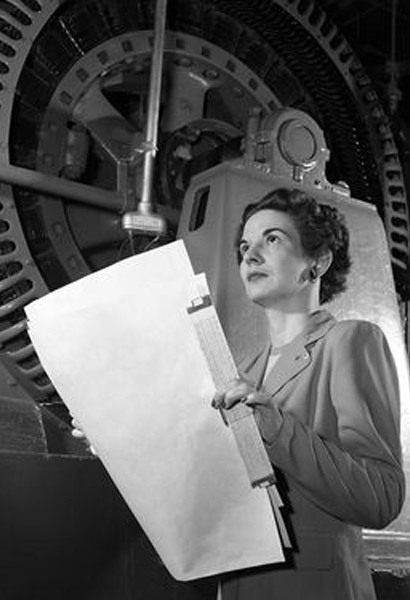

Birth: July 11, 1916
Death: August 16, 1993
Specialty: Electrical Engineering
Major Contributions:
First woman to earn EE degree from UVA
First woman engineer hired at NACA
Managed supersonic wind tunnels for NACA/NASA
Image: Wikimedia
Though powered flight started with the Wright Brothers in North Carolina, by the beginning of World War I, the U.S. lagged behind Europe in airplane technology. On March 3, 1915, Congress founded the National Advisory Committee for Aeronautics or NACA to bridge the gap. The organization would later become the National Aeronautics and Space Administration (NASA). Initially, NACA was tasked with coordinating efforts that were already underway across the nation. However, its mission and workforce soon grew to cover a greater role in aeronautics research in the U.S. Research in the 1910s and 1920s included flight tests and streamlining studies. NACA began to hit its stride in the 1930s, when the threat of a new world war forced rapid development and testing of new aircraft.
In 1939, Kitty O’Brien became the first female engineer hired by NACA working at the Langley Memorial Aeronautical Laboratory. She was an electrical engineer who had just become the first woman to complete her degree in electrical engineering from the University of Virginia, after having successfully sued just for admittance to the all-male engineering school. In and after World War II, while women all over the world were rolling up their sleeves and entering formerly male-dominated roles, O’Brien helped to reshape Langley. She managed several wind tunnels, including supersonic wind tunnels, which are critical for testing new aircraft design on the ground before it goes into flight. These wind tunnels helped to rapidly advance aeronautics for military and commercial applications, and eventually even helped evolve the Space Shuttle. She was influential in the creation of aircraft design standards that were used for many years. She worked for NACA and later NASA for several decades rising to be a Branch Head before retiring.
O’Brien-Joyner was a member of the Institute of Electrical and Electronics Engineers, an Honorary Life Member of the Engineers Club of the Virginia Peninsula, and a member of the Daughters of the American Revolution. It was at NACA that she met Upshur Joyner, a physicist who would become her husband; they had two children together and after retirement made their home in Virginia before dying just three months apart in 1993.
Written by Nicole Hutchison
Sources:
NASA Cultural Resources: Kitty O’Brien Joyner
NASA History Program Office: NACA
History Makers and Barrier Breakers: NASA Interns Share the Women Who Inspire Them
See Also:
Changing Our World: True Stories of Women Engineers
